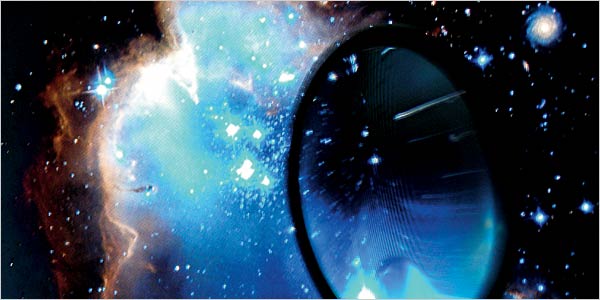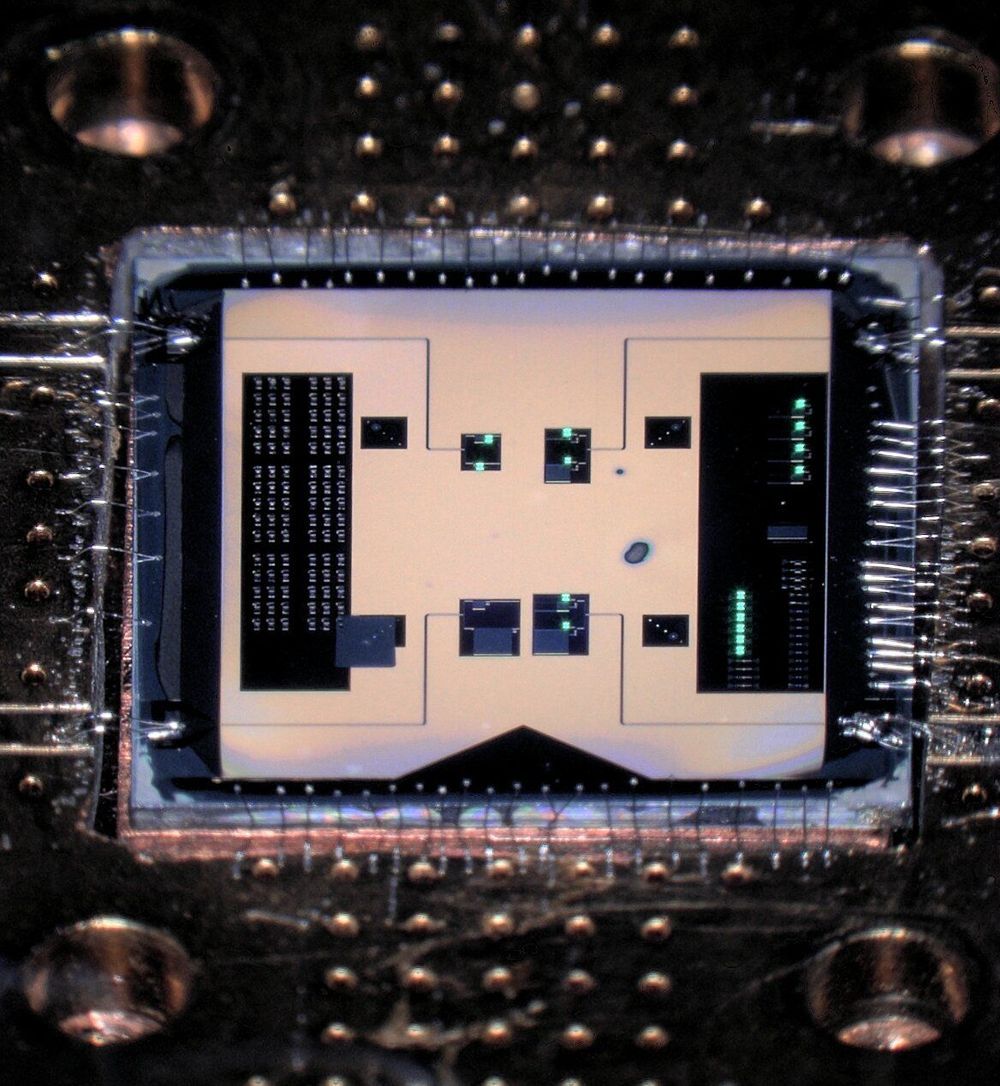Researchers were able to demonstrate ‘spooky’ process happening at much bigger distances than ever before.
Category: quantum physics – Page 776


Strong optical coupling through superfluid Brillouin lasing
Brillouin scattering has applications ranging from signal processing1,2, sensing3 and microscopy4 to quantum information5 and fundamental science6,7. Most of these applications rely on the electrostrictive interaction between light and phonons3,7,8. Here we show that in liquids optically induced surface deformations can provide an alternative and far stronger interaction. This allows the demonstration of ultralow-threshold Brillouin lasing and strong phonon-mediated optical coupling. This form of strong coupling is a key capability for Brillouin-reconfigurable optical switches and circuits9,10, for photonic quantum interfaces11 and to generate synthetic electromagnetic fields12,13. While applicable to liquids quite generally, our demonstration uses superfluid helium. Configured as a Brillouin gyroscope14 this provides the prospect of measuring superfluid circulation with unprecedented precision, and exploring the rich physics of quantum fluid dynamics, from quantized vorticity to quantum turbulence15,16.


Dark Energy –“New Exotic Matter or ET Force Field?”
“The discovery of dark energy has greatly changed how we think about the laws of nature,” said Edward Witten, creator of string theory and one of the world’s leading theoretical physicist at the Institute for Advanced Study in Princeton, N.J. who has been compared to Newton and Einstein.
One of the great known unknowns of the universe is the nature of dark energy, a force field making the universe expand faster. Current theories range from end-of-the universe scenarios to dark energy as the manifestation of advanced alien life.
A new, controversial theory suggests that this dark energy might be getting stronger and denser, leading to a future in which atoms are torn asunder and time ends.


Listening to quantum radio
Circa 2019
Researchers at Delft University of Technology have created a quantum circuit to listen to the weakest radio signal allowed by quantum mechanics. This new quantum circuit opens the door to possible future applications in areas such as radio astronomy and medicine (MRI). It also enables experiments to shed light on the interplay between quantum mechanics and gravity. The results have been published in Science.
The usual solution to a weak radio signal is to find a bigger signal, for instance, by picking a different radio station or by moving to the other side of the room. However, m what if we could just listen more carefully?
Weak radio signals are not just a challenge for people trying to find their favourite radio station, but also for magnetic resonance imaging (MRI) scanners at hospitals, as well as for the telescopes scientists use to peer into space. In a quantum leap in radio frequency detection, researchers in the group of Prof. Gary Steele in Delft demonstrated the detection of photons or quanta of energy, the weakest signals allowed by the theory of quantum mechanics.

Engineers Just Built an Impressively Stable Quantum Silicon Chip From Artificial Atoms
Newly created artificial atoms on a silicon chip could become the new basis for quantum computing.
Engineers in Australia have found a way to make these artificial atoms more stable, which in turn could produce more consistent quantum bits, or qubits — the basic units of information in a quantum system.
The research builds on previous work by the team, wherein they produced the very first qubits on a silicon chip, which could process information with over 99 percent accuracy. Now, they have found a way to minimise the error rate caused by imperfections in the silicon.

Where Computing Is Headed—Beyond Quantum
To address the challenge, some startups are making chips focused on specific software tasks. Others are pushing further, finding processing and storage solutions in new materials, including synthetic DNA.
Quantum computing is the best-known of these new methods. Startups as well as tech giants including Alphabet Inc.’s Google and International Business Machines Corp. are developing quantum computers, which harness the properties of quantum physics to sort through a vast number of possibilities in nearly real time. The advent of quantum computing has paved the way for other experimental techniques, startup executives say.
The market for new computing technology comes as advancements in traditional chip making are hitting a physical limit under Moore’s Law, the idea that every two years or so, the number of transistors in a chip doubles.
At the same time, advances in artificial intelligence, easier access to huge troves of data and the continuing digitization of business processes are putting new demands on corporate and scientific computing.
We May Finally Have a Way to Detect Hawking Radiation Leaking From Black Holes
O.o!
The epic collision between two neutron stars in 2017 really is the science gift that keeps on giving. As they merged, gravitational waves rippled out across the Universe; now reverberations from that event could confirm a decades-old hypothesis about black holes.
Astronomers poring over the gravitational wave data believe they have found evidence of echoes — something that would only occur in the presence of the ‘quantum fuzz’ produced by Hawking radiation.
“According to Einstein’s theory of general relativity, nothing can escape from the gravity of a black hole once it has passed a point of no return, known as the event horizon,” said astronomer and physicist Niayesh Afshordi of the University of Waterloo in Canada.